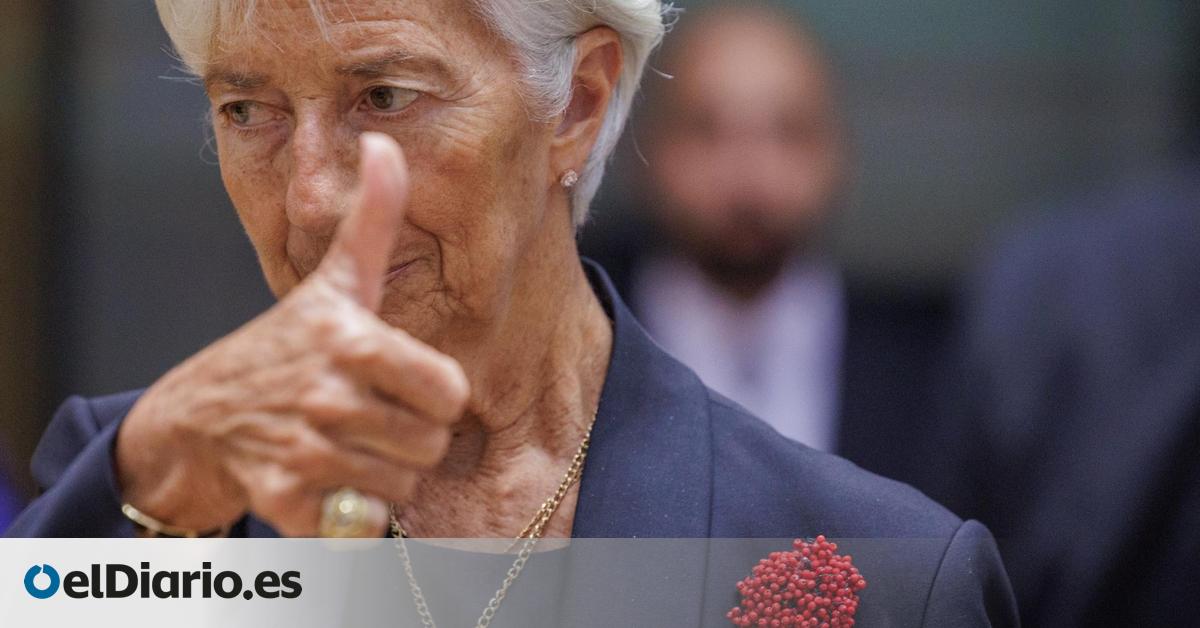
The European Central Bank (ECB) is caught between forces that push the interest rates and forces that push in the opposite direction. With a condition that complicates this completely crossroads: the Governing Council of the monetary institution has hardly visibility about the intensity of these forces, because it depends on the tariffs that end up suffering the exports of the euro zone to the United States and the EU response – which both blocks continue to negotiate – and the risk of a new energy shock and inflation by conflicts and wars that ravage the whole world.
In this context of uncertainty, the ECB has decided on Thursday to pause the drops of interest rates in the euro area, and leave them in 2%, after eight cuts since June 2024, when they were at 4%. “The environment is still exceptionally uncertain, especially due to commercial disputes,” the statement of the institution on Thursday affects. A text that also takes an optimistic tone by ensuring that the activity in the euro area has shown “resilience” so far.
The Governing Council of the ECB, chaired by Christine Lagarde, brakes the mortgage lowering cycle and the rest of loans until more information on the impact of the commercial war on the economy, although the truth is that the majority of experts only expect one more cut of the official ‘price’ of the money from here at the end of the year, from the current 2% to 1.75%. The mention of the “resilience” of the activity even subtracts options from that last descent.
In another way of seeing the same crossroads, this BCE pause arrives with inflation – its main mandate – controlled near the theoretical objective of 2% year -on -year and with less concern about the weakness of the growth of the activity, especially in Germany and France, in a global slowdown scenario in which Spain is a positive exception. Anyway, the statement on Thursday reiterates the “data -based and meeting by meeting” approach, in the face of the institution’s next decisions.
In June, after the last decrease in the ‘price’ of money, Christine Lagarde herself has already warned that the interest rate of interest rates was “at the end.” These types that the monetary institution sets are transferred to the Euribor – at the end and after the end it is an average of the interest rate to which the banks are lent to each other. This index with respect to the cost of mortgages is even advancing the decisions of the ECB.
In June, the Euribor stagnated at 2.08% on average, compared to May, and broke a rolle -month rich running streak. So far in July, the monthly average has barely moved from that figure.
Will there be more decreases from interest rates?
In response to the price crisis that began in 2021, the ECB Governing Council brought official interest rates in the euro area to the maximum of the last decades, 4%, to make financing more expensive, drowning the ability to consume and invest of families and companies and fight against inflation, although the origin of the price crisis was in energy (oil and gas by the Russian invasion of Ucrania) The exit of the pandemic, and not in the demand.
The ECB strategy since 2022 was based on the orthodox response of monetary policy of killing flies to cannon. For a year, the ECB is going through that path because inflation has been moderated, mainly because of energy. This new accommodation cycle – in the jargon of monetary policy means cycle of reduction of financing – occurs in a context of deceleration of the growth of economic activity, on the one hand. On the other, in a scenario in which there are investment needs and increased public spending: in defense, in the energy transition, in the digital …
“The deflationary trend in the euro zone depends mainly on a scenario in which energy prices continue to stabilize, or even fall slightly, while the prices of the other raw materials are maintained under control,” explains Eric Dor, director of Economic Studies of the IESEG.
This expert also introduces the exchange rate factor between the euro and the dollar as one of the keys to the upcoming decisions of the ECB. “The euro has appreciated more than 10% against the dollar since the beginning of the year. This is already having the effect of depressing the exports of the euro zone [las encarece]. Adding to tariffs of the same magnitude. This appreciation also reduces the cost in euros of the imported goods at an initially determined price in dollars [una gran parte petróleo o gas]. This appreciation of the euro is, therefore, disinflationary and constitutes an argument in favor of continuing to cut the interest rates of the ECB, ”says Eric Dor.
Source: www.eldiario.es

